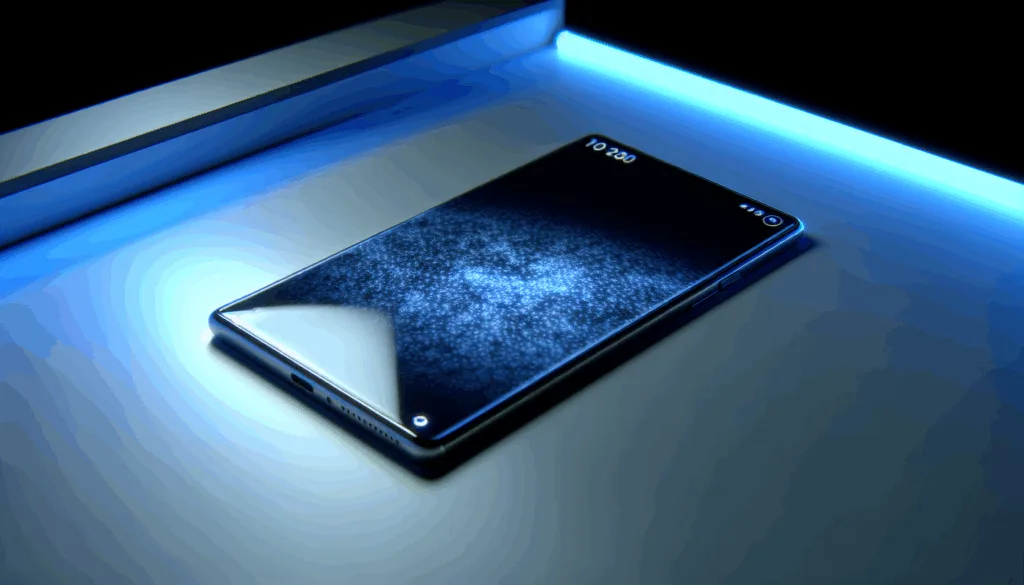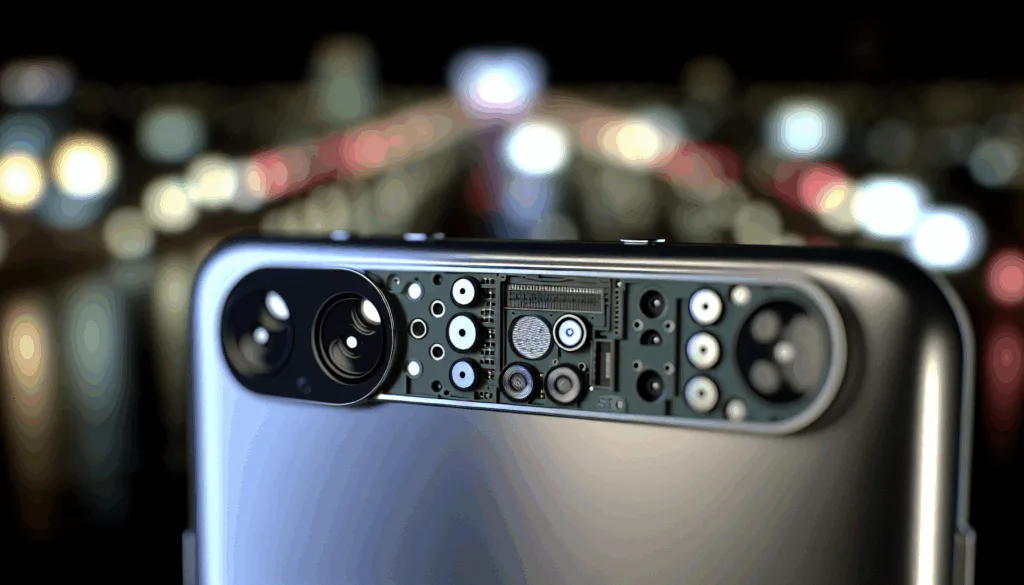Samsung Galaxy S25 Ultra: The Ultimate Smartphone for 2025?
The smartphone landscape is a relentless arena of innovation, where each year brings a new contender vying for the crown of "ultimate device." As we cast our gaze towards 2025, one name invariably rises to the forefront of anticipation: the Samsung Galaxy S25 Ultra. For years, Samsung’s Ultra series has been synonymous with pushing boundaries, integrating cutting-edge technology, and delivering an all-encompassing premium experience. But will the S25 Ultra truly embody the pinnacle of mobile technology, setting an unparalleled standard for the coming year? This in-depth analysis delves into the myriad ways Samsung is poised to redefine the flagship experience, exploring the technological leaps, design philosophies, and user-centric innovations that could cement the S25 Ultra’s legacy as the definitive smartphone of 2025. Prepare to discover whether the rumors and expert predictions align with the promise of a truly revolutionary device.
The Legacy and the Leap: Setting Expectations for the S25 Ultra
Samsung’s "Ultra" moniker isn’t just a marketing term; it signifies a commitment to delivering the absolute best the company has to offer in a smartphone. From the groundbreaking camera systems of earlier iterations to the refined S-Pen integration and robust build quality, each Galaxy S Ultra generation has built upon its predecessor’s strengths, often introducing features that later become industry standards. The S25 Ultra, therefore, isn’t merely an incremental update; it carries the weight of this formidable legacy, expected to deliver a significant leap forward that justifies its premium positioning and distinguishes it from an increasingly competitive market.
Anticipating the S25 Ultra’s design evolution involves more than just predicting subtle aesthetic tweaks. Samsung has consistently refined its industrial design, balancing elegance with durability, and the S25 Ultra is expected to continue this trend, perhaps with even more sophisticated materials and a further optimized form factor. We might see advancements in the integration of the camera module for a more seamless back panel, or perhaps even more radical changes to the display’s curvature or bezel reduction, pushing the screen-to-body ratio to unprecedented levels. The focus will undoubtedly be on creating a device that feels as premium as it performs, with an ergonomic design that belies its powerful internal components.
Ultimately, the S25 Ultra’s position in the 2025 market will be defined by its ability to not only meet but exceed the escalating expectations of consumers and industry experts alike. It needs to be more than just a collection of impressive specifications; it must offer a cohesive, intuitive, and genuinely transformative user experience. This means excelling in every facet, from raw processing power and photographic prowess to battery longevity and the seamless integration of its software ecosystem, ensuring it stands as a beacon of innovation in a crowded field.
Unprecedented Performance: The Engine of Innovation
At the heart of any true flagship smartphone lies its System-on-Chip (SoC), and for the Galaxy S25 Ultra, this will undoubtedly be a battleground of cutting-edge silicon. Speculation points towards a bifurcated strategy, with certain regions receiving Qualcomm’s next-generation Snapdragon 8 Gen 4 and others featuring Samsung’s own Exynos 2500, both fabricated on advanced 3nm processes. These chips are not just about raw clock speeds; they represent a fundamental shift towards more powerful Neural Processing Units (NPUs) for on-device AI, vastly improved graphics rendering for gaming, and unparalleled efficiency that extends battery life even under heavy loads.
Beyond the core processor, the S25 Ultra is expected to push the boundaries of RAM and storage configurations. While 12GB and 16GB of LPDDR5X RAM are already common in high-end devices, the S25 Ultra might introduce 24GB options, particularly for models targeting intensive AI workloads or advanced multitasking scenarios. Storage, too, is likely to see a bump, with 512GB and 1TB becoming standard, and potentially even a 2TB variant for content creators and power users. These substantial memory and storage capacities are crucial for handling the ever-growing demands of high-resolution media, complex applications, and the vast datasets required for advanced on-device AI processing.
Crucially, raw power means little without effective thermal management. The S25 Ultra will likely feature an even more sophisticated cooling system, possibly incorporating larger vapor chambers or innovative graphite sheets, to ensure sustained peak performance without throttling. This is vital for demanding tasks like extended gaming sessions, 8K video recording, or running complex AI models directly on the device. Samsung’s engineering prowess in this area will be key to unlocking the full potential of its next-gen hardware, ensuring that the S25 Ultra doesn’t just benchmark well, but performs flawlessly in real-world, intensive usage scenarios.

A Visual Masterpiece: Display Technology Redefined
The display has always been a cornerstone of the Galaxy S Ultra experience, and the S25 Ultra is poised to elevate this even further. We anticipate the introduction of a new generation of Dynamic AMOLED, perhaps dubbed "Dynamic AMOLED 4.0," which will push the boundaries of brightness, color accuracy, and power efficiency. Expect peak brightness levels that make outdoor visibility effortless, even under direct sunlight, coupled with an even wider color gamut and perfect black levels for an immersive viewing experience. The adaptive refresh rate, likely ranging from 1Hz to 144Hz or even higher, will ensure buttery-smooth scrolling and gaming while conserving battery life when static.
One of the most anticipated advancements is the continued evolution of under-display camera (UDC) technology. While previous iterations have shown promise, the S25 Ultra could finally deliver a truly invisible UDC that doesn’t compromise on image quality. This would result in an uninterrupted, full-screen viewing experience, eliminating the need for punch-holes or notches. Achieving this requires significant breakthroughs in pixel density over the camera area and advanced software algorithms to compensate for light diffraction, an area where Samsung has been heavily investing.
Beyond visual fidelity, the S25 Ultra’s display will likely boast unparalleled durability. Samsung often collaborates with Corning for the latest Gorilla Glass Victus iterations, and the S25 Ultra could feature an even more robust protective layer, offering superior scratch and drop resistance. Furthermore, advancements in display panel technology itself might lead to more flexible or even slightly curved edges that are less prone to shattering, enhancing the overall resilience of the device. This combination of stunning visuals and enhanced durability will ensure the S25 Ultra’s display remains pristine and functional for years to come.
The Camera System: Beyond Pixel Counts
The camera system on the Galaxy S Ultra series has consistently been a benchmark for mobile photography, and the S25 Ultra is expected to continue this tradition, moving beyond mere megapixel counts to focus on holistic image quality. While a new generation of Samsung’s 200MP ISOCELL sensor is highly probable, the real innovation will lie in its larger sensor size, improved light gathering capabilities, and advanced pixel-binning techniques that produce stunning 12MP or 50MP images with incredible detail and dynamic range. Expect significant improvements in low-light performance, capturing vibrant and noise-free photos even in challenging conditions.
Computational photography, powered by the S25 Ultra’s enhanced NPU, will be the true differentiator. This isn’t just about applying filters; it’s about real-time image processing that intelligently enhances every aspect of a photo, from sharpening details and reducing noise to optimizing colors and dynamic range. Features like advanced semantic segmentation, where the AI understands different elements within a scene (sky, skin, foliage) and optimizes them independently, will lead to more natural and professional-looking results. We could also see more sophisticated generative AI features integrated directly into the camera app, allowing for advanced object removal, background manipulation, or even stylistic transformations on the fly.
The telephoto and ultrawide lenses are also poised for significant upgrades. Samsung’s periscope telephoto lens has been a standout feature, and the S25 Ultra might introduce a variable aperture or even a dual-periscope system to offer more versatile optical zoom ranges without digital interpolation. The ultrawide lens could see improvements in sensor size and autofocus capabilities, making it more useful for macro photography and low-light wide shots. Video capabilities will also be pushed, with potential for 8K video recording at higher frame rates, advanced stabilization, and cinematic modes that leverage the device’s AI for professional-grade results, making the S25 Ultra a formidable tool for mobile videographers.

Powering the Future: Battery and Charging Innovations
Battery life remains a critical concern for flagship smartphone users, and the Samsung Galaxy S25 Ultra is expected to address this with a multi-pronged approach. While the physical capacity might see a modest increase, the real advancements will likely come from improvements in battery chemistry, such as higher energy density materials, allowing for more power in the same or even smaller physical footprint. Coupled with the efficiency gains from the new 3nm SoC and the adaptive refresh rate display, the S25 Ultra could deliver truly all-day battery life, even for heavy users.
Charging speeds are another area ripe for innovation. While Samsung has been somewhat conservative compared to some competitors, the S25 Ultra might finally push wired charging beyond 45W, potentially reaching 65W or even 80W, allowing for a full charge in under 30 minutes. Wireless charging speeds are also expected to improve, possibly exceeding 20W, making quick top-ups more convenient. Reverse wireless charging will likely see enhancements too, enabling faster charging of accessories like Galaxy Buds or smartwatches.
Beyond raw speed, Samsung is likely to introduce more intelligent battery management features. This could include advanced AI algorithms that learn user charging patterns to optimize battery health over the long term, preventing overcharging and extending the lifespan of the battery. Features like "Bypass Charging" (powering the device directly from the charger during gaming to reduce heat and battery degradation) might become more sophisticated and widely available. These innovations collectively aim to provide not just longer usage times, but also a healthier, more sustainable battery experience throughout the device’s life cycle.
The Software Ecosystem: One UI and AI Integration
The hardware prowess of the Galaxy S25 Ultra would be incomplete without a sophisticated software layer, and One UI, Samsung’s custom Android skin, is set to evolve significantly. Building on the foundation of Android 15 (or whatever version is current in 2025), One UI 7 or 8 will likely introduce a more refined, intuitive, and visually appealing interface. Expect enhanced customization options, smoother animations, and a more cohesive design language that seamlessly integrates across Samsung’s expanding ecosystem of devices, from wearables to smart home appliances.
The true paradigm shift, however, will come from deep AI integration within One UI. With the S25 Ultra’s powerful NPU, many AI tasks that currently rely on cloud processing will be executed on-device, offering faster responses, enhanced privacy, and offline capabilities. This could manifest in more intelligent personal assistants that understand complex contextual commands, advanced photo and video editing capabilities that leverage generative AI, and even proactive device optimization that learns user habits to manage resources more efficiently. Imagine real-time language translation during calls, or AI-powered summarization of long documents directly on your device.
Security and privacy, always paramount for a flagship device, will also see significant enhancements. The S25 Ultra is expected to feature advanced biometric authentication, potentially an even larger and more reliable ultrasonic fingerprint sensor, alongside enhanced facial recognition. Software-wise, Samsung’s Knox security platform will likely be bolstered with new layers of protection against malware and data breaches. Furthermore, One UI will likely offer more granular control over app permissions and data sharing, empowering users with greater transparency and control over their personal information in an increasingly AI-driven world.

Connectivity and Beyond: Future-Proofing the Ultra
In a world increasingly reliant on seamless connectivity, the Samsung Galaxy S25 Ultra will be designed to be future-proof. It’s almost certain to support Wi-Fi 7, offering significantly faster speeds, lower latency, and improved efficiency compared to Wi-Fi 6E, crucial for high-bandwidth applications like 8K streaming or cloud gaming. 5G-Advanced (5.5G) capabilities will further enhance mobile broadband, providing even greater speeds and reliability in supported networks. Furthermore, the S25 Ultra might introduce satellite connectivity for emergency communications in areas without cellular coverage, a feature gaining traction in the premium smartphone segment.
Beyond standard wireless protocols, the S25 Ultra could integrate a host of new sensor technologies that expand its utility beyond traditional smartphone functions. We might see advanced health sensors, such as more accurate continuous glucose monitoring (non-invasive), improved body composition analysis, or even environmental sensors for air quality and UV levels. These integrations would transform the smartphone into an even more comprehensive personal health and wellness hub, seamlessly syncing data with Samsung Health and other connected devices.
The integration with Samsung’s broader ecosystem will also be a key selling point. Enhancements to SmartThings will allow for even more intuitive control over smart home devices, while DeX, Samsung’s desktop experience, will likely see significant upgrades in performance and usability, blurring the lines between a smartphone and a portable workstation. The S25 Ultra will serve as the central hub for a connected lifestyle, offering unparalleled interoperability with Samsung’s growing portfolio of smart devices and services.
The S-Pen: Evolution of a Signature Feature
The S-Pen has become an undeniable signature feature of the Galaxy S Ultra series, elevating it beyond a mere smartphone into a versatile productivity and creativity tool. For the S25 Ultra, we anticipate further refinements to its latency, making the writing and drawing experience even more fluid and natural, almost indistinguishable from pen on paper. New air gestures could be introduced, allowing for more intuitive remote control of the device, from navigating presentations to controlling media playback with subtle hand movements.
The integration of the S-Pen with the device’s burgeoning AI capabilities will unlock a new realm of possibilities. Imagine using the S-Pen to circle an object on screen and have the AI instantly identify it, provide context, or perform a smart search. AI could also enhance note-taking, transcribing handwritten notes into perfect text in real-time, summarizing meeting minutes, or even generating visual ideas based on rough sketches. This fusion of tactile input with intelligent processing will make the S-Pen an even more indispensable tool for professionals, students, and creatives alike.
Beyond its core functions, the S-Pen itself might see subtle hardware innovations. While speculative, there’s potential for the S-Pen to incorporate minor sensors, perhaps for basic health monitoring (e.g., heart rate via touch), or even advanced haptic feedback that simulates different textures or writing surfaces. The core focus, however, will remain on enhancing its precision, responsiveness, and seamless integration into the One UI experience, ensuring it remains a powerful differentiator for the S25 Ultra.
| Feature Category | Anticipated Samsung Galaxy S25 Ultra Specification (Key Speculations) | Previous Generation (S24 Ultra) Comparison | Expected Impact |
|---|---|---|---|
| Processor | Snapdragon 8 Gen 4 / Exynos 2500 (3nm Process) | Snapdragon 8 Gen 3 for Galaxy (4nm) | Significant performance leap, enhanced AI processing, improved efficiency. |
| Display | Dynamic AMOLED 4.0 (1Hz-144Hz), >3000 nits peak brightness, Invisible UDC | Dynamic AMOLED 2X (1-120Hz), 2600 nits peak, Punch-hole | Brighter, smoother, truly uninterrupted full-screen experience. |
| Main Camera | 200MP ISOCELL HP3/HP4 (larger sensor), Advanced Computational Photography | 200MP ISOCELL HP2 | Superior low-light, dynamic range, and detail; AI-enhanced image processing. |
| Telephoto | Dual Periscope Zoom (e.g., 3x & 10x optical) or Variable Optical Zoom | 3x & 5x optical (10x equivalent) | More versatile and higher quality optical zoom ranges. |
| Battery | ~5100mAh-5200mAh (improved chemistry) | 5000mAh | Marginally larger capacity with significant efficiency gains for extended battery life. |
| Wired Charging | 65W-80W Fast Charging | 45W | Significantly faster charging times. |
| Wireless Charging | >20W Fast Wireless Charging | 15W | Faster and more convenient wireless top-ups. |
| RAM | 12GB, 16GB, (potentially) 24GB LPDDR5X | 8GB, 12GB | Enhanced multitasking, better handling of AI models. |
| Storage | 512GB, 1TB, (potentially) 2TB UFS 4.0 | 256GB, 512GB, 1TB | More space for high-res media, apps, and AI data. |
| Connectivity | Wi-Fi 7, 5G-Advanced, Satellite Connectivity (emergency) | Wi-Fi 6E, 5G | Faster, more reliable wireless connections; emergency communication. |
| S-Pen | Reduced Latency, Enhanced AI Integration, New Air Gestures | Existing S-Pen (low latency, air gestures) | More natural writing, intelligent features, intuitive controls. |
| Durability | Next-gen Gorilla Glass Armor/Victus, Enhanced Frame Materials | Gorilla Glass Armor | Superior scratch and drop resistance. |
The Price of Perfection: Value Proposition and Market Impact
The Samsung Galaxy S25 Ultra, as the epitome of mobile technology for 2025, will undoubtedly command a premium price. Samsung’s pricing strategy typically positions the Ultra at the very top of the consumer smartphone market, reflecting its cutting-edge components, extensive R&D, and comprehensive feature set. While an exact figure is speculative, it’s reasonable to expect a starting price in the realm of $1,299 to $1,499 USD, potentially increasing for higher storage configurations. The value proposition will hinge on whether consumers perceive these technological advancements and the overall user experience as justifying the significant investment.
In the fiercely competitive landscape of 2025, the S25 Ultra will face formidable rivals from Apple’s iPhone 17 Pro Max, Google’s Pixel 10 Pro, and various high-end offerings from Chinese manufacturers like Xiaomi and OnePlus. Its success will not only depend on its raw specifications but also on its ability to differentiate itself through unique features like the integrated S-Pen, Samsung’s robust ecosystem, and its pioneering AI capabilities. The S25 Ultra needs to stand out as the device that offers the most complete and future-proof package, appealing to users who demand the absolute best without compromise.
Crucially, the long-term value of the S25 Ultra will be bolstered by Samsung’s commitment to software support. With promises of 7 years of OS updates and security patches for recent flagships, the S25 Ultra is expected to receive unparalleled longevity, ensuring it remains relevant and secure for many years to come. This extended support, combined with its durable build and advanced hardware, makes the S25 Ultra an investment in a device that will continue to deliver a premium experience well beyond its initial release cycle, mitigating the impact of its high upfront cost.
Conclusion
The Samsung Galaxy S25 Ultra stands on the precipice of a new era for smartphones, poised to integrate the most advanced hardware with a deeply intelligent software ecosystem. From its anticipated next-generation processor and revolutionary display to its AI-powered camera system and enhanced S-Pen functionality, every aspect of the device points towards a holistic leap forward. It’s not merely about incremental upgrades; it’s about a synergistic blend of technologies designed to redefine user interaction and productivity.
Key takeaways from our deep dive suggest that the S25 Ultra will likely set new industry benchmarks in performance, display immersion, and photographic capabilities, all while pushing the boundaries of on-device AI integration. Its commitment to long-term software support further solidifies its position as a compelling, future-proof investment. While the premium price tag will undoubtedly place it at the top tier of the market, the comprehensive suite of features and the promise of an unparalleled user experience could very well justify its status.
As 2025 approaches, the anticipation for the Samsung Galaxy S25 Ultra is palpable. If Samsung delivers on the promise of these innovations, integrating them into a seamless and intuitive package, then the S25 Ultra won’t just be another flagship; it will be a definitive statement, a technological marvel that truly earns the title of "The Ultimate Smartphone for 2025," shaping the mobile experience for years to come.

